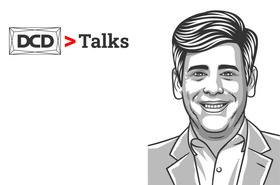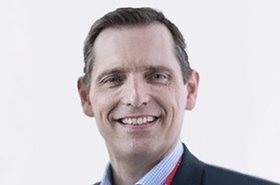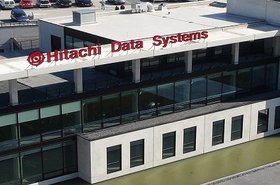Steeped in more than 100 years of history, Hitachi Energy has been on a mission to create a more efficient energy system for the data center industry, ever since the latter’s rise to the top of the electricity consumption rankings.
As the demand for data continues to grow at the same time as environmental concerns increase, customers are increasingly turning to organizations like Hitachi Energy to optimize their energy supply chain and look at new and innovative ways to streamline their growing power needs.
Dave Sterlace is the strategic account manager for Global Data Centers at Hitachi Energy in North America. Here, he discusses the advent of the data center as a microgrid in its own right and the latest advances in efficient power delivery in a burgeoning market.
Firstly, he explains how the need for more sustainable energy has shaped the data center industry: "At Hitachi Energy, we have a deep investment in sustainable technologies. Perhaps two years ago, if you had spoken with us, we might have discussed primarily energy efficiency needs, which is a valid portion of it. Now, sustainability goes across the whole power supply chain.
"As data centers get bigger, we're using large chunks of electricity. So, we have to figure out how to do that in a sustainable way. That can be led by being more innovative, using more sustainable technologies and power sources, and making sure that the way we use our electrons, so to speak, is as efficient and as well placed as possible."
So, does he feel that data cente operators are becoming more aware of the importance of moving the dial on the placement of power delivery in their priorities?
"If you look at the big hyperscale folks, the household names in the space, they started with things like power purchase agreements to offset their carbon footprint.
"Now they're looking at how we can be on sustainable energy 24/7, in some cases generating a portion of the energy they need from on-site renewable sources, which adds complexity. At Hitachi Energy, we have been working as the grid is changed from a monolithic power source – straight down to the application, to managing disparate power sources, making sure the grid stays balanced, reactive and stable, and strong."
What are the key drivers to optimizing power delivery in a sustainable way, and what are the specific challenges for the data center market as it continues to grow?
The easy answer is that data centers simply can't deal with intermittency in the power chain. The bald fact is that power sources like the sun and wind are neither guaranteed nor constant. For data center operators, seamlessly integrating wind and solar is a challenging conundrum; one that will require a lot of effort to solve.
"We've had short-term interruption figured out for years, with things like uninterruptible power sources," says Sterlace. "The longer-term solution has traditionally been diesel generators: their power density is an advantage that has been tough to replicate with other sustainable forms. To replace a one or two-megawatt diesel generator, you could be looking at a soccer pitch-sized solar farm, and you still don't have the always-on type operation that you need."
So, if not solar, what does he see as the ultimate solution to a more sustainable alternative? Sterlace makes an oft-overlooked point that batteries aren't necessarily the environmentally neutral answer we assume.
"I think the ideal technology hasn't been found yet. Battery power density, when you look at lithium-ion, is better than it was with sealed lead acid, but it's not the best yet. With something that has been dug up in mines, some argue that you're just trading one fossil fuel for another."
So, if not batteries – what else is there?
"If you look at long-term storage, we have very good options that are just starting to be looked at, at utility scale, like pumped hydro. You can use solar to run a pump and run it down during the night to create a battery that doesn't suffer from cycling, so it can run for days at a time. There's some really good technology that we've got to strongly consider for data centers.
But Hitachi Energy's role in the process runs much deeper than simply finding sources of fuel – it covers the entire gamut – including relationships with the existing power networks.
"We operate primarily in larger data centers, so large 'colo' caters to large hyperscalers – in the tens, if not hundreds of megawatts type scale. That involves many different utility companies, and you have to deal with each one individually, but as a large user, you can come to the table and say, 'Look, this is a steady load; we're going to use this much electricity, let's work together on it'."
Sterlace points out that having these hyperscale relationships with power generators can often influence decisions on matters that have wider positive implications for the surrounding community, such as their choice of the fuel mix.
"It puts us in a place where we can say, 'Hey, look, we want to purchase more sustainable energy from you,' and negotiate electricity at higher voltages that are proven to be more reliable. I saw a project recently where we were connecting at 400 kilovolts – two years ago, where I saw 200, I almost fell off my chair!"
Going big on microgrids
This brings us to the topic of microgrids, but what exactly is a microgrid?
"At its core, it's a way to use disparate power sources, either in conjunction with, or isolated from, your traditional utility power. We've done work in an industry where we've built microgrids that are hundreds of megawatts out in very remote locations. When you think about it, the data center, almost by definition, is a microgrid," says Sterlace.
Another advantage of microgrids is that their total energy yield can actually benefit the local community, further leveraging your position with utilities.
“Part of what we do is provide substations for clients, where you might be able to say 'I'll pay for a substation, but it's going to feed my loads, or give me first right of refusal,’ then you can optimize the substation to a data center type load to make that portion of it more efficient.”
But reuse of power from redundant and downsized facilities can also play an important role: "Here in the US, there's a lot of heavy industry left as old, large steel mills give way to micro mills. There's plenty of infrastructure available that could be repurposed for data centers with minor upgrades; we can refurbish and repurpose, not build from scratch – there's a tremendous amount of gains that can be handled that way."
So, you've decided to optimize your power requirements, and you've found a partner like Hitachi Energy. What are the first steps?
"The first thing we always recommend is to get to a digital communications network so that traditional substation functions and utility functions can be done digitally, but also adds monitoring of energy usages. This means the protection control can be more dynamic. You might change settings based on the time of day or the energy mix coming in; then, you can democratize the information to talk digitally across multiple sources.
"The IT side can then talk with the power side where, traditionally, if there's been a hard wall. We have some advanced tools that allow you, for example, to have a carbon calculator on what you're doing, provided by Hitachi. '
But there are a number of important considerations to bear in mind when upgrading your control system, Sterlace adds: "I think it's important not to be stuck in a proprietary control system. We use global standards, which are industry-wide and developed for the smart grid. The last thing you want is a system that only runs on one type of control because if something changes or gets added that isn't compatible, you end up adding extra infrastructure to compensate.
"It's peer to peer, so with distances of hundreds of kilometers to cover, there's no latency from going via a central operations center. Plus, the fact it's been broadly accepted means that chances are it'll be future-proof, creating an overall system umbrella, all talking to each other."
Powering the microgrid is as important as controlling it. Hitachi Energy is one of the companies looking at how future data center demands will be met with the next generation of fuels. Sterlace points to the change in attitudes that have brought this about.
"Just a few years ago, we didn't think that we were an active part of the grid. Now, we have all these different choices we can make. How can we best make those choices for our goals moving forward?
"There are incremental steps we can take. We have to look at things in terms of those increments because we're not going to solve it all tomorrow, but we can take these logical steps toward it. Efficiency plays into that – where you are on the grid and how reliable your grid is, so if we can do all these things together, we'll have a pretty clear picture of what we can do moving forward."
One of the most significant investments for Hitachi Energy is in the possibilities presented by hydrogen as a clean, sustainable fuel source. But how close are we to seeing this become a reality?
"A true green hydrogen powered by renewables is possible, but not at a large scale yet. There's going to be a lot of investment in it, which would be great. Microsoft has demoed a few megawatts for 48 hours, it's proven it can work. There's been some tremendous progress, and I think we'll come up with a really good solution."
And so, although we won't necessarily see hydrogen become the dominant source for a while, there's a lot to be optimistic about, and Hitachi Energy's commitment to microgrids is a large step on the road to data centers becoming cleaner, greener, and more efficient, even as they scale up to meet demand.
"If we just treat the data center as a microgrid, and if we start looking at it as one of our choices, we have this kind of energy buffer in front of us. Maybe at night, we use hydrogen; during the day, we use solar, and part of the solar goes for making more hydrogen, etcetera. So I think there are various ways that will make for a really interesting future."
With an unparalleled installed base in more than 140 countries, Hitachi energy is advancing the world's energy system to be more sustainable, flexible and secure. To find out how Hitachi Energy can support you in your journey towards carbon neutrality, visit hitachienergy.com/data-centers.
More from Hitachi
-

DCD>Talks Energy Transition with Dave Sterlace, Hitachi
In this DCD>Talk, live from Connect Virginia, we sit down with Dave Sterlace to explore the move to green energy
-

Carbon neutral data centers are a key part of IT’s sustainability drive
And a good starting point is to optimize apps and data
-

Hitachi launches sovereign cloud service in Japan
Company to offer secure cloud service from Hitachi-managed facilities

